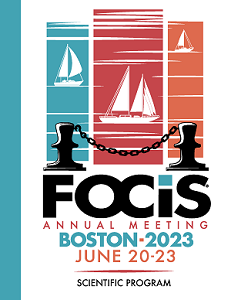Immunogenetics
Session: Late-Breaking Abstracts
An Acquired Error of Immunity with high frequency somatic mutations in STAT5B and KRAS.
Wednesday, June 21, 2023
3:30 PM - 3:45 PM
Location: Salon H-K

Etienne Masle-Farquhar, PhD
Research Officer
Garvan Institute of Medical Research
Sydney, New South Wales, Australia
Presenting Author(s)
Abstract Text: Acquired mutations arising with age and across tissues typically have negligible impacts, but a minority are pathogenic and/or confer competitive advantage, driving (expanded) mutant clones and clinical pathology. Notably, variants can be acquired that are germline lethal, and evidence is mounting that acquired variants modifying one gene in trans, or modifying different genes/pathways, interact to drive unexpected cellular or clinical phenotypes.
We applied our genomics and multi-omics pipeline to identify and study Acquired Errors of Immunity (AEI) caused by pathogenic somatic mutations. Here, we discuss a 17-year old with early-onset inflammatory bowel disease, evolving panhypogammaglobulinaemia, bronchiectasis, splenomegaly, eosinophilia, monocytosis and thrombocytopenia, without diagnosis of haematological malignancy. Whole genome sequencing and MuTect2 somatic variant calling of blood and buccal swab DNA identified not one, but two gain-of-function acquired mutations present from age five: T-cell leukemia-associated STAT5B-T628S and cancer- and lymphoproliferation-associated KRAS-G12S. Both mutations had variant allele fractions (VAFs) of approximately 25% within whole blood and 50% within leukocyte lineages. This raises two possibilities: that the two somatic mutations interact in driving this patient’s pathologies, and that targeting STAT5B-JAK and/or KRAS signalling may be clinically beneficial. Using amplicon-based deep sequencing, we monitor both mutations’ VAFs across leukocyte subsets, different tissues, over time and following JAK inhibitor treatment. Using 10X short-read and Nanopore long-read sequencing, we analyse transcriptomes paired with STAT5B/KRAS mutation calls at single-cell resolution.
Our findings add to growing literature surrounding Acquired Errors of Immunity; they highlight fascinating possible interplays of multiple acquired mutations in complex cellular and clinical phenotypes.
We applied our genomics and multi-omics pipeline to identify and study Acquired Errors of Immunity (AEI) caused by pathogenic somatic mutations. Here, we discuss a 17-year old with early-onset inflammatory bowel disease, evolving panhypogammaglobulinaemia, bronchiectasis, splenomegaly, eosinophilia, monocytosis and thrombocytopenia, without diagnosis of haematological malignancy. Whole genome sequencing and MuTect2 somatic variant calling of blood and buccal swab DNA identified not one, but two gain-of-function acquired mutations present from age five: T-cell leukemia-associated STAT5B-T628S and cancer- and lymphoproliferation-associated KRAS-G12S. Both mutations had variant allele fractions (VAFs) of approximately 25% within whole blood and 50% within leukocyte lineages. This raises two possibilities: that the two somatic mutations interact in driving this patient’s pathologies, and that targeting STAT5B-JAK and/or KRAS signalling may be clinically beneficial. Using amplicon-based deep sequencing, we monitor both mutations’ VAFs across leukocyte subsets, different tissues, over time and following JAK inhibitor treatment. Using 10X short-read and Nanopore long-read sequencing, we analyse transcriptomes paired with STAT5B/KRAS mutation calls at single-cell resolution.
Our findings add to growing literature surrounding Acquired Errors of Immunity; they highlight fascinating possible interplays of multiple acquired mutations in complex cellular and clinical phenotypes.

